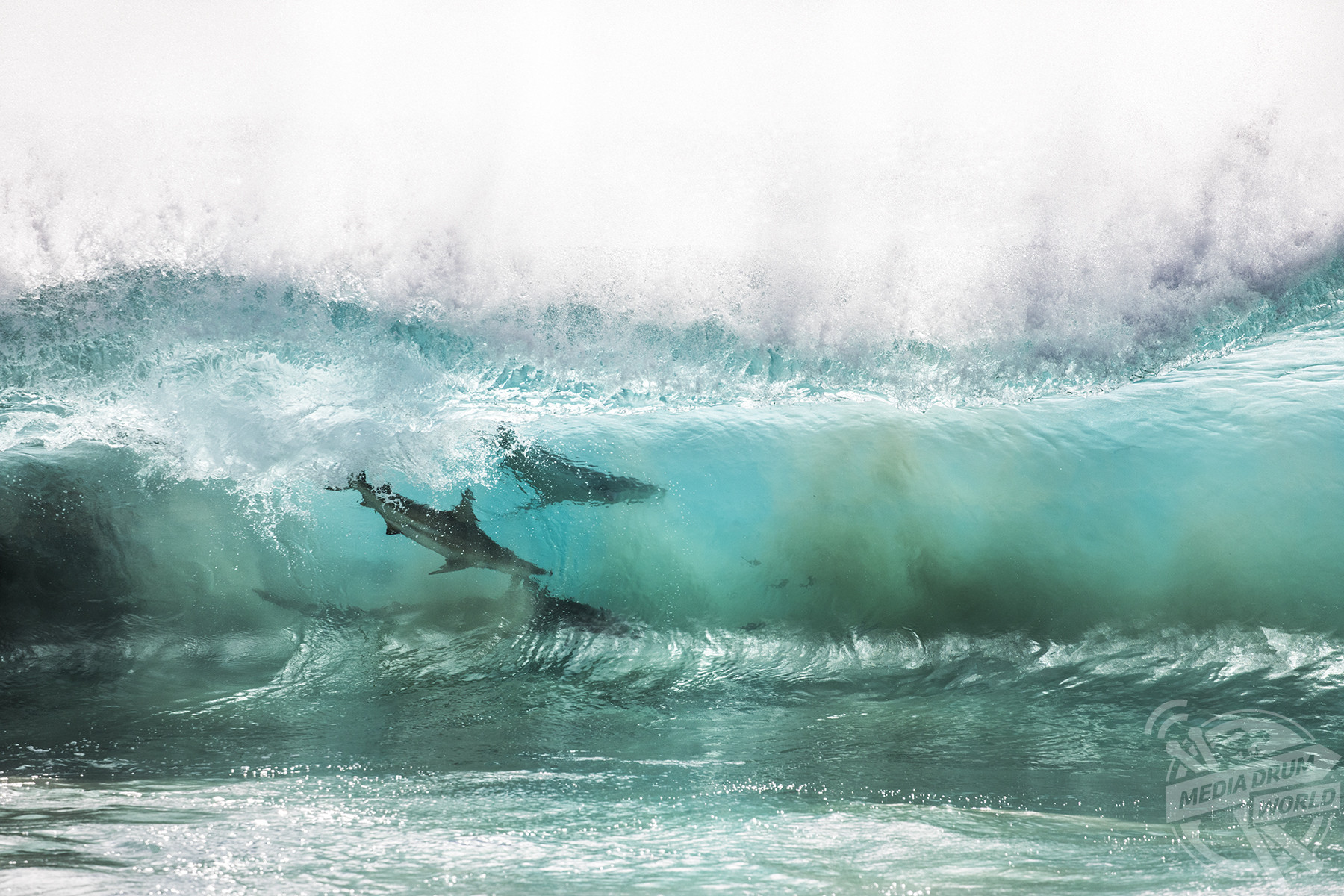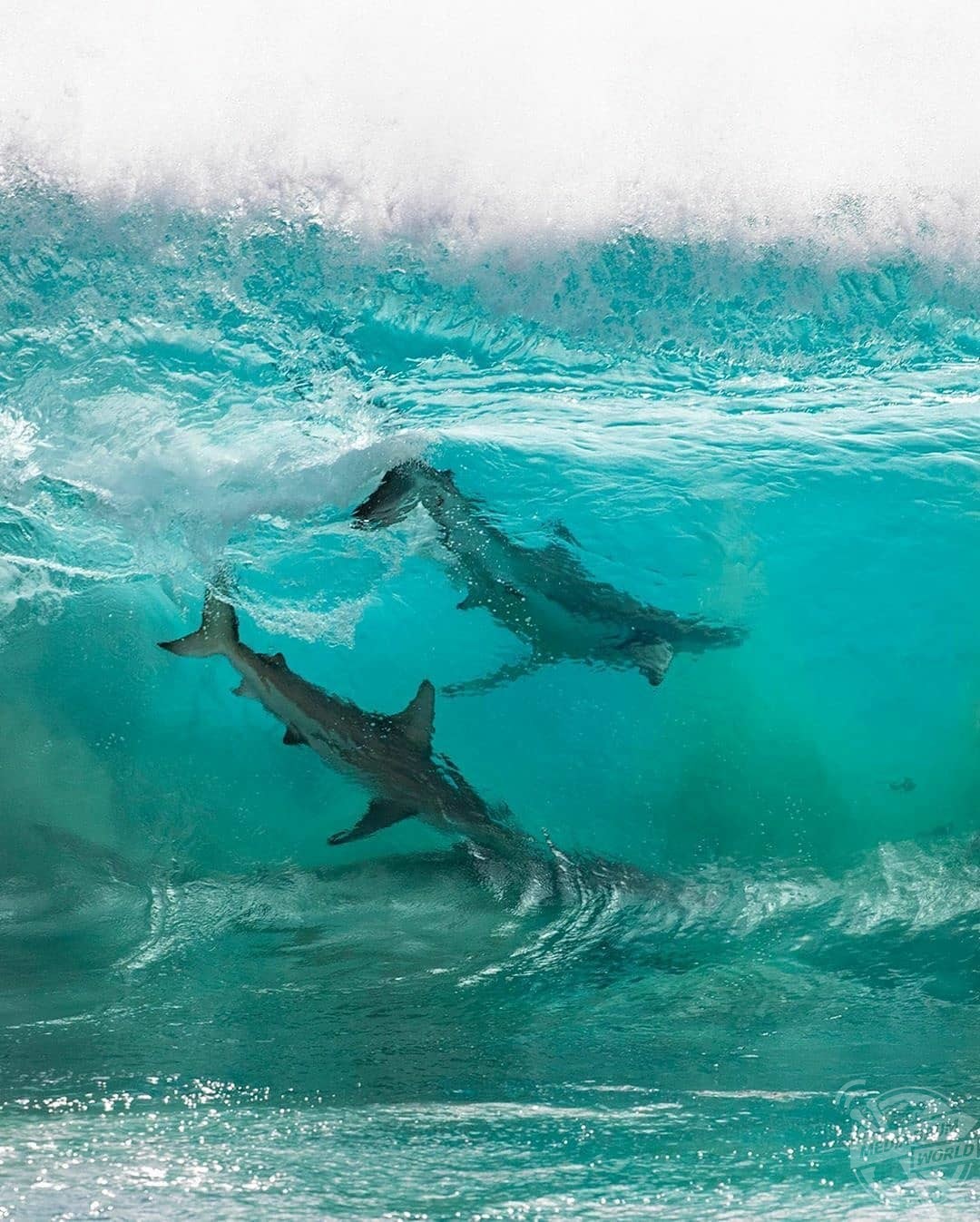
By Alexander Greensmith
TWO COPPER sharks surfing the waves less than sixty-five feet from a popular Australian beach shows just how dangerous surfing Down Under can be for humans.
Unbelievable photos showed the 370-pound copper sharks as they swam up and down with the motion of the ocean.
Another image captured the mammals, who can swim at speeds of up to 35 miles-per-hour, looking as though they were swimming behind what looks like a glass wall as they caught an incredible eight-foot wave.

The wave-riding beasts were captured by professional photographer Sean Scott (43) from Burleigh Heads, Australia. He used a Canon EOS 5D with a 100-400mm lens to shoot the sharks off Red Bluff Beach, Australia. The encounter lasted for two hours where the father-of-three happily snapped in amazement from 200-feet away.
“This was one of the most incredible wildlife encounters I’ve had,” said Sean.
“A lot of people try and tell me the shot was fake, but I hope this sets the record straight. I’ve never shared all these images before.

“It just shows how close these sharks came to go over the falls. They ended up getting barrelled.”
Red Bluff is a coastal camping site in Western Australia. Some of the world’s best surfers visit between May and August every year for the waves which range from one-foot to eight-feet in height.
Also known as the Bronze whaler shark, copper sharks are in the top 10 sharks most commonly implicated in unprovoked attacks on humans, with a total of 15 incidents since records began in the 16th century. However, only one fatality has ever been recorded worldwide, according to data from the Florida Museum.

The most recent incident involving these sharks was on July 16, 2020, when Anika Craney (29) got bitten by a six-and-a-half-pound bronze whaler shark while swimming at Fitzroy Island near Cairns, Queensland.
“There was roughly three-hundred sharks sighted in total. It was a feeding frenzy,” Sean added.

“Sharks are beautiful creatures. I found this one particular encounter fascinating; they were only interested in eating the bait fish.
“There were human surfers and body boarders close-by and they’d swim up to check them out but weren’t interested in them, the sharks were just keeping their bellies full of fish.”






